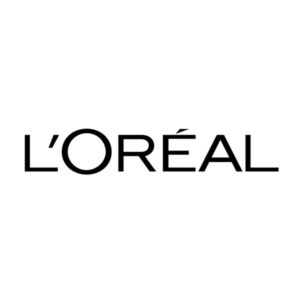 In a crowded, competitive world where time is an ever-scarcer resource, people desire filters that can help them quickly identify high-value collaborators. By creating belief networks that connect their brands to certain characteristics, luxury goods companies provide consumers with valuable filtering tools. L’Oréal has created one of the largest collections of luxury beauty belief networks ever. Through savvy marketing, innovative design, a storied heritage, and brilliant acquisitions, L’Oréal has assembled and cultivated a collection of brands that many consumers believe are synonymous with beauty, wealth, culture, coolness, and status. This stable of iconic brands, which literally numbers in the dozens, includes industry powerhouses such as L’Oréal Paris, Lancôme, Redken, Kérastase, Yves Saint Laurent Beauté, and Giorgio Armani Beauty. The strength of L’Oréal’s brands is evidenced by both their size and scope. The company’s brands are globally recognized and span a variety of disparate beauty product areas, everything from makeup to skincare to fragrance to hair care, each of which is a large and rapidly growing revenue generator for the company. Moreover, the company has a storied heritage connected to celebrities, entertainers, supermodels, and centers of culture going back, in some cases, for over a hundred years. This heritage aspect is particularly important since new brands can’t go back in time and create a heritage, putting them at a huge disadvantage versus incumbent brands such as those in L’Oréal’s portfolio. As a result of the social signaling value of the company’s brands, we believe L’Oréal is likely to grow both its volume and pricing over time. In fact, we believe its pricing outlook is among the most favorable in our whole portfolio. Because signals of loyalty to a group and status with a group are only reliable so long as they are costly to send, L’Oréal has to raise its prices as wealth increases in order to maintain its brands’ value propositions. This pricing power is further reinforced by favorable industry tailwinds. Whereas many industries have shrunk as a percentage of budgets over time, spending on personal care as a percentage of global consumer expenditures has grown from 2.33% in 1996 to 2.41% by the end of 2016. Not only does L’Oréal benefit from enduring pricing power and long-term volume growth opportunities, but its products are also disposable and have short repurchase cycles, causing their demand to be fairly stable across various economic environments. In fact, global cosmetics revenue even grew during the recession of 2008.
In a crowded, competitive world where time is an ever-scarcer resource, people desire filters that can help them quickly identify high-value collaborators. By creating belief networks that connect their brands to certain characteristics, luxury goods companies provide consumers with valuable filtering tools. L’Oréal has created one of the largest collections of luxury beauty belief networks ever. Through savvy marketing, innovative design, a storied heritage, and brilliant acquisitions, L’Oréal has assembled and cultivated a collection of brands that many consumers believe are synonymous with beauty, wealth, culture, coolness, and status. This stable of iconic brands, which literally numbers in the dozens, includes industry powerhouses such as L’Oréal Paris, Lancôme, Redken, Kérastase, Yves Saint Laurent Beauté, and Giorgio Armani Beauty. The strength of L’Oréal’s brands is evidenced by both their size and scope. The company’s brands are globally recognized and span a variety of disparate beauty product areas, everything from makeup to skincare to fragrance to hair care, each of which is a large and rapidly growing revenue generator for the company. Moreover, the company has a storied heritage connected to celebrities, entertainers, supermodels, and centers of culture going back, in some cases, for over a hundred years. This heritage aspect is particularly important since new brands can’t go back in time and create a heritage, putting them at a huge disadvantage versus incumbent brands such as those in L’Oréal’s portfolio. As a result of the social signaling value of the company’s brands, we believe L’Oréal is likely to grow both its volume and pricing over time. In fact, we believe its pricing outlook is among the most favorable in our whole portfolio. Because signals of loyalty to a group and status with a group are only reliable so long as they are costly to send, L’Oréal has to raise its prices as wealth increases in order to maintain its brands’ value propositions. This pricing power is further reinforced by favorable industry tailwinds. Whereas many industries have shrunk as a percentage of budgets over time, spending on personal care as a percentage of global consumer expenditures has grown from 2.33% in 1996 to 2.41% by the end of 2016. Not only does L’Oréal benefit from enduring pricing power and long-term volume growth opportunities, but its products are also disposable and have short repurchase cycles, causing their demand to be fairly stable across various economic environments. In fact, global cosmetics revenue even grew during the recession of 2008.
To read a more detailed description about a company that fits into the same thesis, please click here.
Back to Global Champions Summary Page

